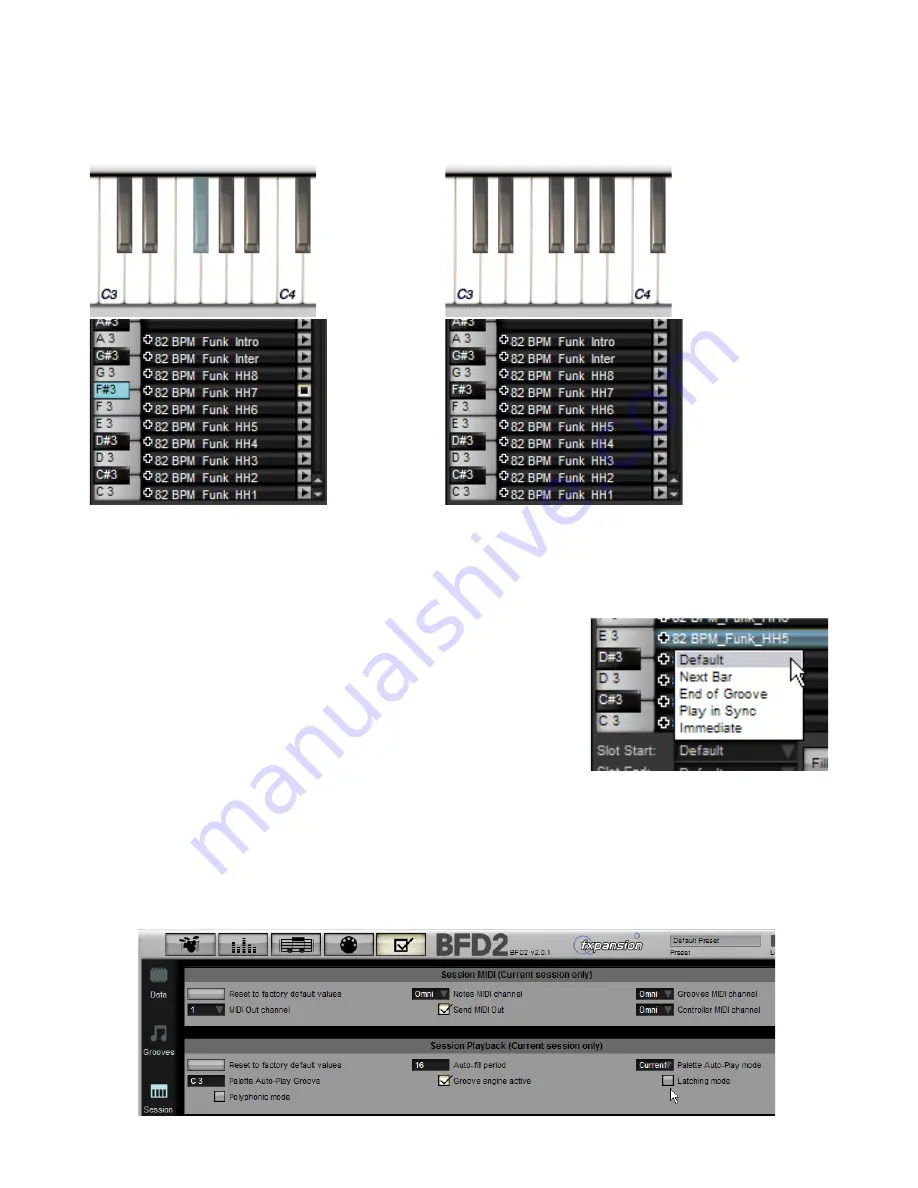
5:4 Playing Grooves in the Palette
Triggering Grooves with MIDI notes
Once a Groove is loaded into a slot, you can trigger the slot’s MIDI key in order to play the Groove.
Groove playback occurs while the key is held down, and stops when it is released. The slot’s key label turns light blue while the
Groove plays, and its playback indicator lights up. These indicators are also used as preview buttons (see below).
Start and End Groove Actions
The way in which a Groove starts and what happens when it ends are defined by Groove Actions.
A Groove’s Start action dictates whether it starts playing immediately or at the
start of the next beat or bar.
There are a variety of possible End actions, including playing the current Groove
again or moving onto another, even though the input MIDI note has not changed.
You can set up default behaviours for all slots’ Start and End Groove Actions, and
customize individual slots to behave differently. See section 5:6 for more details.
Latching mode
By default, playback is active while the MIDI key is held down. Using the Latching
mode setting in the BFD2 Session preferences you can change this behaviour so that instead, you play the key once to start
playback, and play it again to stop playback. Alternatively, while a Groove is playing, you can simply trigger another Groove via
another MIDI key.
Polyphonic mode
Normally, only one Groove can be played at any one time. If Polyphonic mode is enabled in the BFD2 Session preferences, more
than one Groove can be played simultaneously. Things can quickly get too busy or simply very messy when using polyphonic
Groove playback. See section 7:7 for some hints on using this mode.
The Groove in
the Palette’s F#
slot plays while
an F# note
is played into
BFD.
When the note
is released,
playback of the
Groove stops.
Содержание BFD2
Страница 1: ...2 0 1 Dec 2007 www fxpansion com...
















































